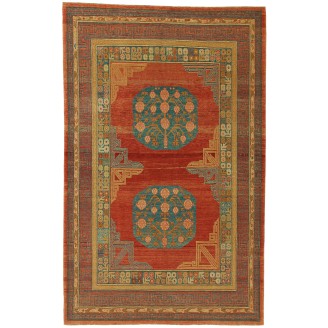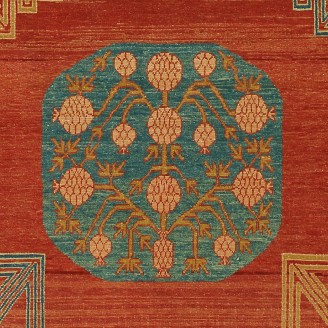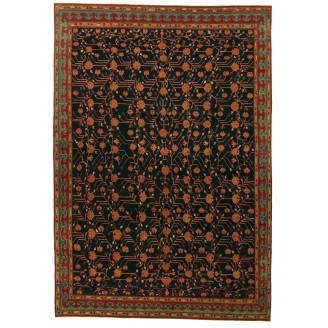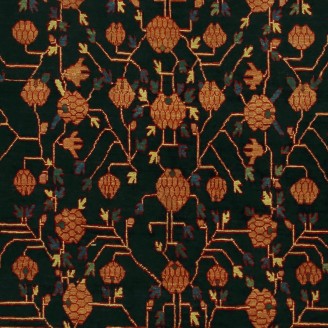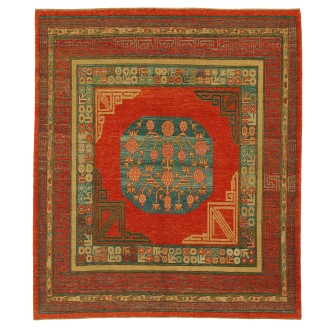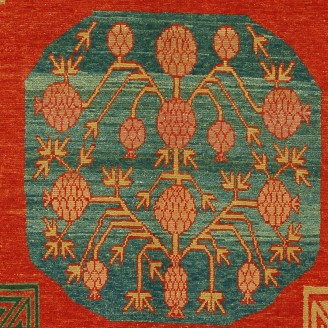Yarkand Pomegranate Carpet
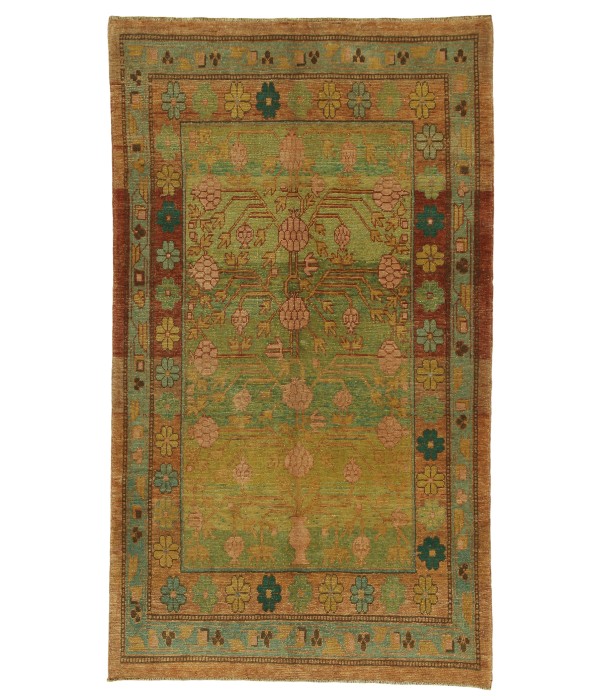
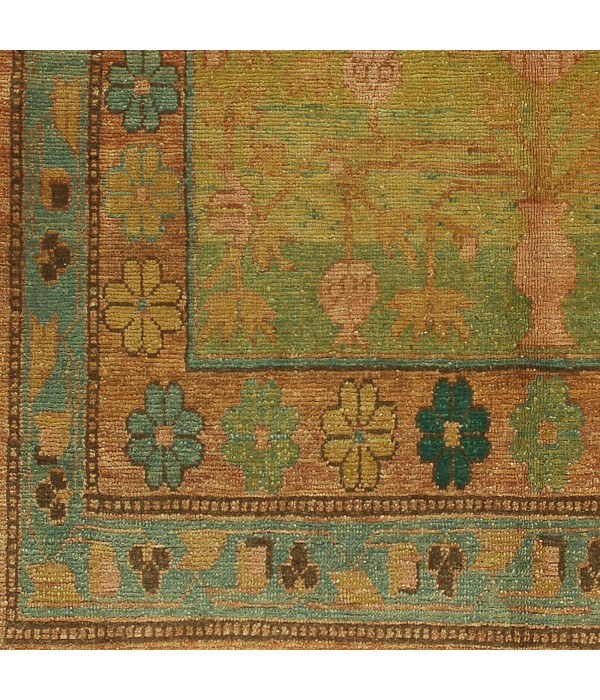
Out Of Stock
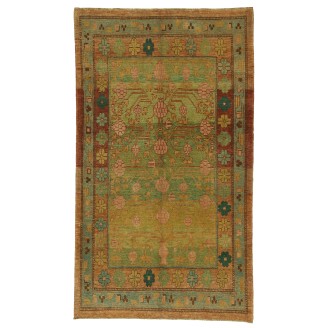
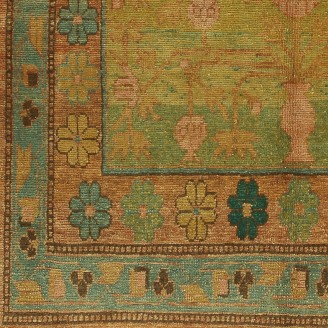
Model: ARTW0009Yarkand Pomegranate Carpet
Group: Turkestan Rugs Family
Area: Yarkand region
Material of Pile: Natural Dyed Hand-spun Wool
Material Warp / Weft: Cotton on Wool
Structure: Symmetrical knot on depressed warp inclining to the right
Knots Density: 32x26
Pile (mm): 4
Production Place: Southeastern Anatolia – Diyarbakir
Location: Tokyo
Stock: Out Of Stock
Dimensions:
The source of carpet comes from the book Carpets from Eastern Turkestan, Hans Bidder, 1964, pl.2 and Hali Magazine 2018 Issue 198 pg.139. This is one vase with the pomegranate tree design rug from the late 18th century from the east Turkestan, Central Asia area. Most larger carpets with this design show four vases from which the plant rises, with the four sections marking a cross at the axis of the carpet. 'Central Asia' is the name given to that vast territory, extending from the Caspian Sea to Chinese Turkestan, the Aral Sea, and the northern part of Afghanistan, across which for centuries the old trader caravans meandered back and forth along the Silk Route. Conquered by Russia in the 19th century, this much-contested region found itself renamed 'Russian Turkestan' and divided into five republics: Uzbekistan, Kirgizstan, Kazakhstan, Turkmenistan, and Tajikistan. In these lands, with their arid steppes, deserts, and mountainous massifs, live nomadic and semi-nomadic tribal peoples, loyal to their ancestral traditions, who weave on horizontal looms and produce relatively simple rugs designed to cover the floors of their yurts. The design of this carpet is interpreted with a series of floral borders and soft colors are chosen by our designers for this carpet.
Dimensions:
3 ft 8 in x 6 ft 4 in ( 114cm x 195cm )
Price:
$0
Ex Tax: $0

